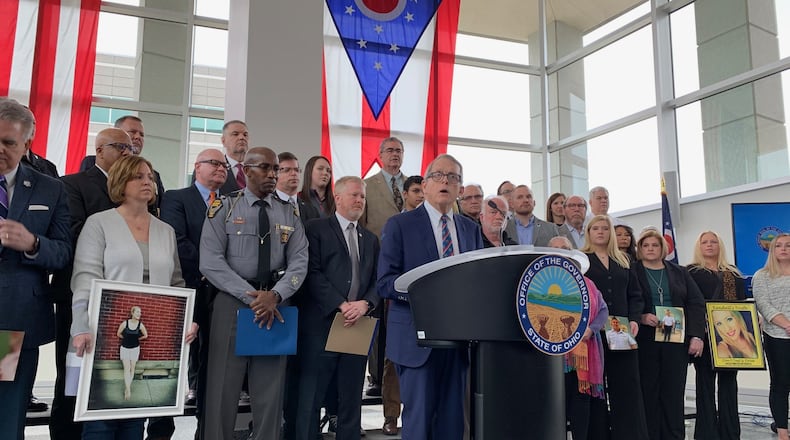Under the Hands-Free Ohio Bill, motorists would be prohibited from watching videos, taking photos or videos, texting, talking, dialing, typing addresses into mapping apps, or nearly any other hands-on function. Drivers would be required to use hands-free technology or accomplish the task — such as punching a destination address into a GPS app — while stopped and out of traffic lanes.
RELATED: Ohio increases air patrols to catch distracted drivers
Violators would face mandatory fines starting at $150 for the first offense, $250 for the second and $500, plus license suspension, for the third offense. In cases where someone is seriously injured or killed, motorists would be charged with aggravated vehicular assault, which is a felony, said state Sen. Stephanie Kunze, R-Hilliard, a bill sponsor.
Do you think Ohio should toughen laws for using a cell phone while driving? https://t.co/JFtQCROIab
— Ohio Politics (@Ohio_Politics) February 14, 2020
The bill would allow for limited exceptions, such as calling 911. Drivers would still be permitted to use phones in hands-free mode to talk or dictate texts or listen to received messages.
State Sen. Sean O’Brien, D-Bazetta, said Washington, West Virginia, Hawaii and California saw traffic fatalities decline between 22 percent and 31 percent following adoption of hands-free laws.
DeWine said that data will be a strong selling point as he tries to convince the Ohio General Assembly to adopt the new bill.
“Really what’s at stake is we can pass this and save lives or we can continue down the path where we are going,” DeWine said. “It’s rare for you to have something this obvious, proven by data, where a vote for a bill will save lives.”
Under current law, texting while driving is illegal but it is a secondary offense for adults — meaning police must witness another violation to be authorized to pull over the driver. It is a primary offense for minors.
DeWine has been campaigning to make dialing the phone, texting or other distracted driving activities “as culturally unacceptable as drunk driving.”
DeWine said it takes just a few seconds to read a text message and only a few seconds to rear end someone, drive over a center line or blow through a stop sign.
On April 9, 2011, Middletown resident Aimee Eckert was six-months pregnant when she was hit head-on by a driver who was texting. She lost her unborn baby, Gabriel, and her left leg and spent six months in hospital.
“Put them (your cell phones) down. It’s not worth it. It’s not worth the risk it takes to send an email, to send a text message. It’s not worth the risk” Eckert said.
At a press conference at the Ohio State Highway Patrol headquarters, DeWine noted that traffic fatalities have increased in five of the past six years and early data for 2019 show it was the second-deadliest year in the past decade with at least 1,157 people killed.
Also in the past decade, Ohio increased the highway speed limit to 70 miles per hour, up from 65 mph. Highway speed limits increased to 65mph from 55 mph beginning in 1987.
RELATED: DeWine wants stronger penalties for distracted drivers
Last year, DeWine argued in favor of an increase in the state gasoline tax, saying it was needed to improve the safety of Ohio’s roads and bridges. He also called on lawmakers to make distracted driving a primary offense.
RELATED: Ohio bill would allow traffic stops for texting and driving
At the press conference, the patrol showed dash-cam footage of traffic stops where one driver was playing Pokemon Go and another was watching a football game. Under current law, without witnessing those drivers also fail to use a turn signal, drift from marked lanes or speed, troopers would not be allowed to pull them over.
WHAT DO YOU THINK?
Do you think Ohio should toughen penalties for distracted driving? Vote on Twitter at @Ohio_Politics
BY THE NUMBERS
Ohio Traffic Fatalities, 2010-2019
2010: 1,080
2011: 1,016
2012: 1,122
2013: 990
2014: 1,008
2015: 1,110
2016: 1,133
2017: 1,180
2018: 1,068
2019: 1,157 (preliminary)
Source: Ohio Highway Patrol
About the Author

